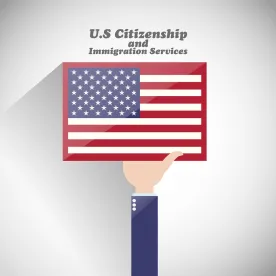The Final Rule
A final rule was published in the Federal Register on August 3, 2020, which considerably increases USCIS’ fees and makes other changes to immigration benefits. DHS originally announced a proposed rule in November 2019; however, the final rule differs in certain aspects from the original proposal. Under the final rule, the fee increases and other changes most significantly affect the applications/petitions for naturalization and adjustment of status, as well as some of the most heavily utilized I-129 employment-based petitions for nonimmigrant workers.
Impact on Immigrant Visa and Adjustment of Status Applications
While most fees for employment-based processes will increase under the final rule, the fees for employment-based I-140 immigrant visa petitions will decrease by 21%.
Additionally, while the I-485 filing fee would marginally decrease for all applicants, USCIS would reinstate a filing fee for each of the Employment Authorization Document (EAD) and Advance Parole (AP) applications, which USCIS had previously done until 2007 when it began waiving the fees for those applications when filed together with Form I-485. Currently, adjustment applicants do not need to pay separately for their initial EAD and AP, or a renewal application, while their adjustment application is pending. Additionally, children under 14 will be required to pay the full amount of the I-485 filing fee instead of the current reduced amount.
Impact on Employment-Based Nonimmigrant Petitions/Applications
As part of the final rule, employment based petitions/applications would face not only fee changes, but also form revisions. There would also be new additional border security fee payments required from employers with a high proportion of H-1B and L-1 employees. Employers that have more than 50 employees and more than 50% are in H-1B or L-1 status presently pay an additional fee of $4,000 for each initial and change-of-employer H-1B petition and $4,500 for each initial L-1 petition. Under the new fee structure, this additional fee would be applicable to all H-1B and L-1 petitions filed by employers that meet the 50 employee/50 percent test, whether for new employment or an extension of stay.
Further, DHS will separate the standard Form I-129 petition into different forms designated for each nonimmigrant H-1B, H-2A/B, L-1, O, and TN classification, and charge different fees for each classification. Currently, the Form I-129 requires the same uniform fee regardless of the classification sought.
The final rule increases the H-1B petition fee by 21%, to $555. While imposing a steep, 75% increase of the L-1 petition fee to $805. Furthermore, beginning October 2, 2020, DHS will increase the premium processing timeline from 15 calendar days to 15 business days. Currently, USCIS must act on a premium processing petition within 15 calendar days.
Partial Elimination of Biometric Services
USCIS will no longer require the current $85 biometrics fee for certain filings, including Applications to Adjust Status (I-485), Naturalization Applications (N-400), and Form I-539, Applications to Change or Extend Status. Instead, DHS will incorporate the cost of biometrics into the fee charged for the specific petition/application. However, Temporary Protected Status (TPS) applications, Executive Office of Immigration Review (EOIR) motions, and appeal requests would still require a reduced biometrics fee payment.
Some of the DHS new fees for Naturalizations, Adjustment of Status Applications, Employment-Based Applications and other benefits would be as follows:
| Immigration Benefit Request | Current Fees | New Fees | Percentage Modification |
| N-400 Application for Naturalization | $640 | $1,170 | 83% Increase |
| I-485 Application to Register Permanent Residence or Adjust Status with EAD/AP | 1225 (750 for children under 14) | $2,270 | 85% Increase |
| I-140 Immigrant Petition for Alien Worker | $700 | $555 | 21% Decrease |
| I-131 Application for Travel Document | $575 | $590 | 3% Increase |
| I-765 Application for Employment Authorization | $410 | $550 | 34% Increase |
| I-129H Petition for H-1B Nonimmigrant Worker | $460 | $555 |
21% Increase
|
| I-129H2B (Named Beneficiaries) | $460 | $715 | 55% Increase |
| I-129H-2B (Unnamed Beneficiaries) | $460 | $385 | 10% Decrease |
| I-129L Petition for L Nonimmigrant Worker, including L blankets | $460 | $805 | 75% Increase |
| I-129O Petition for O Nonimmigrant Worker | $460 | $705 | 53% Increase |
|
I-129 Application for Nonimmigrant Worker: I-129E&TN
I-129MISC (H-3, P, Q, or R) |
$460 | $695 | 51% Increase |
| I-539 Application to Extend/Change Nonimmigrant Status | $370 | $400 | 8% Increase |
USCIS claims that since the agency is primarily self-funded, the fee increase is necessary to ensure all of its operational costs are covered and to avoid a $1 billion annual funding deficiency. Coincidently, USCIS recently announced its plan to furlough more than 13,000 employees (two-thirds of its workforce) absent approval by Congress of $1.2 billion emergency funding requested to make up budget shortfalls due to a significant decrease in case filing volume during COVID-19. USCIS postponed the proposed furloughs until the end of August while waiting for congressional approval of its emergency bailout, which was set to be approved as part of the second COVID-19 stimulus package. However, Congress recently announced it failed to reach a deal on the second COVID-19 stimulus package; thus, it is likely that USCIS will move forward with the proposed furloughs. This means employers and applicants may experience a significant increase in case processing times despite the fee increases.




 />i
/>i

